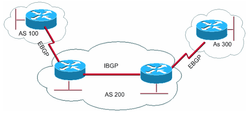MTU
The MTU is the maximum payload length for a particular transmission media. For example, the MTU for Ethernet is typically 1500 bytes. (The maximum packet length for Ethernet is typically 1518 bytes, but that includes 14 bytes of Ethernet header and 4 bytes of CRC, leaving 1500 bytes of payload).[1]

Figure 1 - MTU.[2]
A question that you may be asking yourself is, does the ethernet header include a VLAN tag?
The IEEE 802.3ac standard increased the maximum Ethernet frame size from 1518 bytes to 1522 bytes to accommodate the four-byte VLAN tag. Some network devices that do not support the larger frame size will process these frames successfully but may report them as "baby giant" anomalies.[3]
Jumbo Frames
A jumbo frame is an Ethernet frame with a payload greater than the standard maximum transmission unit (MTU) of 1,500 bytes. Jumbo frames are used on local area networks that support at least 1 Gbps and can be as large as 9,000 bytes. Because jumbo frames are not defined in the IEEE 802.3 specifications for Ethernet, vendor support for jumbo frames and their maximum transmission units may vary.[4]
Jumbo frames provide a number of benefits over the traditional - IEEE 802.3 - ethernet MTUs. These include:
- The amount of frame sent across the network is reduced.
- The number of ethernet headers are reduced as a result of fewer frames.
- The reduction in frames results in few headers being required.
- CPU cycles are reduced at the sender and receiver side due to few headers needing to be built and read.
- Network bandwidth is reduced due to the reduction in headers.
Some further, more detailed explanations around the benefits of jumbo frames are also described at quora.com:
A single 9k jumbo frame replaces six 1.5k standard frames, producing a net reduction of five frames, with fewer CPU cycles consumed end to end. Further, only one TCP/IP header and Ethernet header is required instead of six, resulting in 290 (5*(40+18)) fewer bytes transmitted over the network.
It takes over 80,000 standard Ethernet frames per second to fill a gigabit Ethernet pipe, consuming a lot of CPU cycles and overhead. Sending the same data with 9k jumbo frames, only 14,000 frames need to be generated, with the reduction in header bytes freeing up 4 Mbps of bandwidth.
These savings in CPU cycles and bandwidth can produce some significant increases in network performance. In 1999 study on jumbo frames over gigabit Ethernet, "Microsoft, Sun, Compaq, Hewlett-Packard, and IBM all recorded at least 50% increases in TCP throughput with reduced CPU utilization on single- and multi-processor systems using jumbo frames."

Figure 2 - Jumbo Frames.[5]
TCP MSS
TCP MSS, the maximum segment size, is a parameter of the options field of the TCP header that specifies the largest amount of data, specified in bytes, that a computer or communications device can receive in a single TCP segment. It does not include the TCP header or the IP header.[6]
This MSS value is announced (often mistakenly called a negotiation) from both sides during the TCP 3WHS. Each side says:
I can accept TCP segments up to the size of x.
Once each side announces its MSS, the remote side is expected to send packets containing a TCP segment no larger than the announced MSS value.
Below shows an example of the MSS being announced within the 3WHS,
10.1.1.100 192.1.1.100 [SYN] Seq=0 Len=0 MSS=1460 TSV=556758839
192.1.1.100 10.1.1.100 [SYN, ACK] Seq=0 Ack=1 Win=16484 Len=0 MSS=1280 WS=0
10.1.1.100 192.1.1.100 [ACK] Seq=1 Ack=1 Win=5888 Len=0
References
"MTU - The Wireshark Wiki." 25 Jun. 2008, https://wiki.wireshark.org/MTU. Accessed 9 Oct. 2018. ↩︎
"MSS VS MTU - 117909 - The Cisco Learning Network." 6 Jun. 2017, https://learningnetwork.cisco.com/thread/117909. Accessed 9 Oct. 2018. ↩︎
"IEEE 802.1Q - Wikipedia." https://en.wikipedia.org/wiki/IEEE_802.1Q. Accessed 10 Oct. 2018. ↩︎
"What is jumbo frames? - Definition from WhatIs.com - SearchNetworking." https://searchnetworking.techtarget.com/definition/jumbo-frames. Accessed 10 Oct. 2018. ↩︎
"Why would you need jumbo frame routers? - Quora." https://www.quora.com/Why-would-you-need-jumbo-frame-routers. Accessed 9 Oct. 2018. ↩︎
"MTU and MSS: Internet terms explained - Incapsula." https://www.incapsula.com/blog/mtu-mss-explained.html. Accessed 10 Oct. 2018. ↩︎






